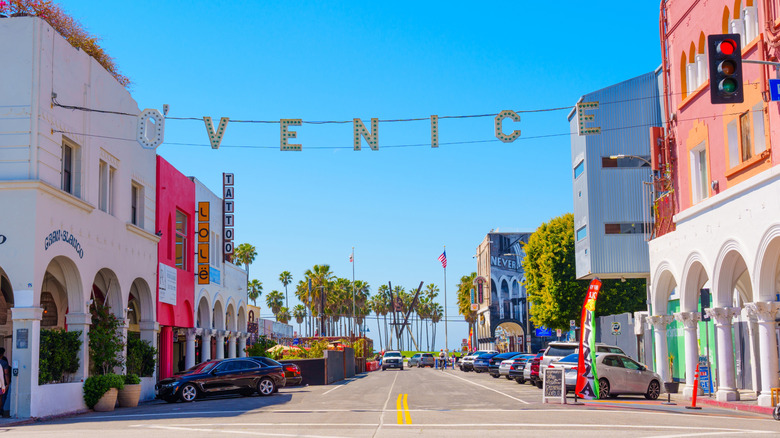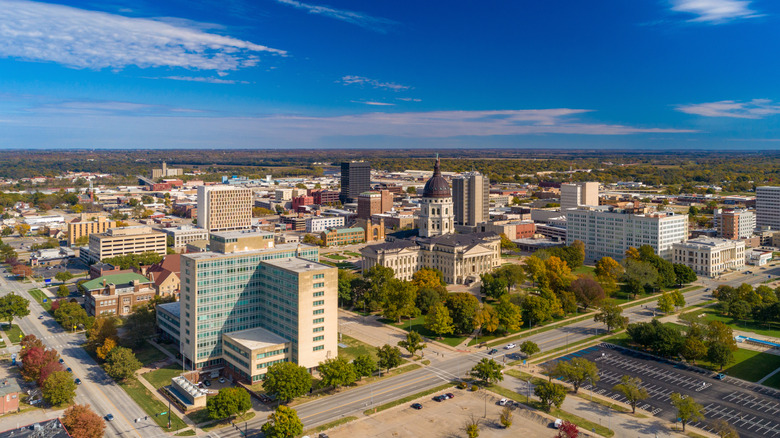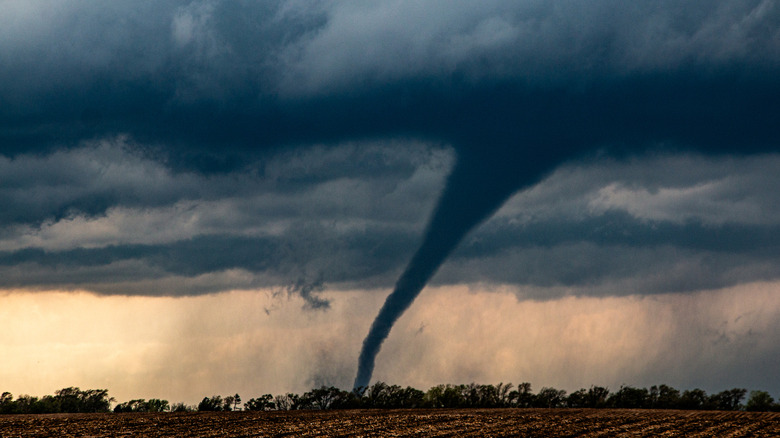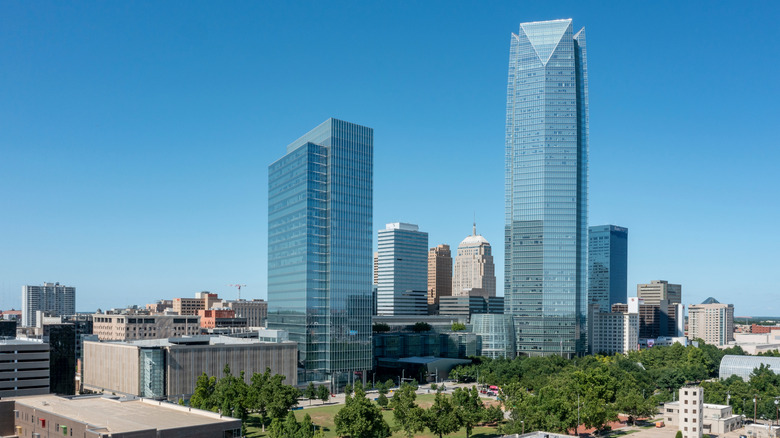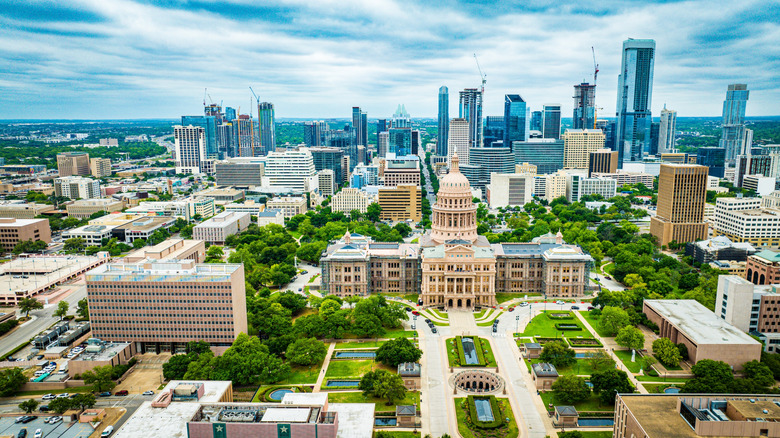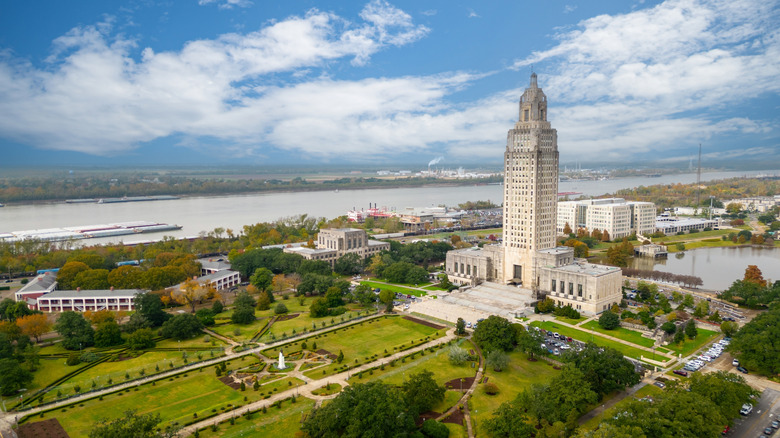Retirees Be Warned: Bankrate Says These 10 States Are The Worst For Retirement In 2025
A Nationwide Retirement Institute study reported that 32% of investors doubt whether it would make good financial sense for them to retire where they currently live. Does that sound like you? You may already have a destination in mind. But before you ride off into the sunset wearing a bathing suit, golf shoes, and a cowboy hat, take a sobering look at independent evaluations of the worst states to retire. You might find your intended target on the list. Having to reevaluate your initial decision may be disappointing, but in the long run, it could save you time, money, and bitter heartache.
The following discussion is based on a Bankrate analysis. However, additional sources are cited that corroborate the findings. Bankrate judged states in eight major categories, with affordability being the most impactful. The next three, weather, safety, and healthcare, were close in the amount of weight they were given. The tier below them included taxes and the arts. The final two categories, which examined the age of the state's population and miscellaneous issues like walkability, were the least influential factors in the grading system.
Obviously, you should look at the Bankrate evaluations in relation to your particular needs and values. For example, you may not be deterred by inclement weather. On the other hand, you may be willing to spend more than the average retiree on living costs, including entertainment and leisure, so you may prefer a retirement location that maintains a vibrant arts scene.
Florida
It may be shocking to learn that Florida ranks in the bottom 10 of places to live after leaving the workforce. People cite Florida's friendly taxes as a solid reason to move there. Yes, its taxes are favorable, earning Florida fourth place among states with the best tax laws. However, taxes don't tell the complete story of trying to live on a fixed income.
Florida isn't one of the cheapest places to live in America. The state finished 48th in affordability. Only Nebraska (49th) and Hawaii (50th) made a worse showing. Affordability is the heaviest weighted category in the Bankrate evaluation, accounting for 28% of a state's grade. Bankrate reaches its affordability rating by combining the Cost of Living Index from the Council for Community and Economic Research (C2ER) with its own data of the average yearly cost of insuring a home in that state. According to the C2ER website, its examination of the affordability of Florida, as well as other states, looks at the cost of housing, utilities, groceries, transportation, healthcare, and miscellaneous goods and services.
People often think of Florida's weather as a positive. But Florida finished 45th among states in the weather category due to the increasing viciousness and frequency of hurricanes. For example, in 2024, Hurricanes Helene and Milton struck the state, bringing dangerous and costly flooding. Milton also spawned a horde of tornadoes. The 2024 hurricanes were follow-ups to 2022's Category 4 Hurricane Ian, which cost the state around $112 billion, and 2023's Hurricane Idalia.
New Mexico
New Mexico's biggest boast is its favorable climate. The state finished only behind California when it came to gorgeous weather. On the other end of the spectrum, New Mexico finished last in safety. What good is there in retiring to a place with great weather if you can't enjoy it because you're too afraid to walk out your door?
According to USAFacts, which sourced 2024 data from the Federal Bureau of Investigation, New Mexico's violent crime rate was an astonishing 99.7% higher than the national average. Violent crime is specific to acts against people and can include everything from aggravated assault to murder. Meanwhile, New Mexico's property crime rate was also 56.3% greater than the average across the country. Property crimes often involve theft, such as stealing automobiles or burglarizing a home or business. If you think the numbers look bad for New Mexico, consider this: the violent and property crime figures for 2024 actually represent a decrease over the previous year of 4% and 4.3%, respectively.
The city of Albuquerque was in the national news in the spring of 2025, when the state's governor revealed plans to use the National Guard to battle crime on the streets of the state's largest city, according to the New York Times. The strategy called for the troops to concentrate on a hotspot near famed Route 66, where police have responded to seven murders in the last six years at a neighborhood market.
California
One of the key reasons California finished so poorly in the rankings is its tax system. The Tax Foundation lists California as having the third-worst tax code in the nation. It's surpassed only by New Jersey in the 49th slot and New York in the 50th. California can tax individual income up to 13.30%. Per capita, California residents pay $9,229 in local and state taxes. The sales tax rate across the state is 7.25%. Locally, the sales tax can vary, but the average combined state and local sales tax rate is 8.85%. A gallon of gasoline comes with a tax of 68.1 cents, making California gas the highest in the country.
Besides taxes, the study also found life could be more expensive than in most other U.S. states. For example, according to the Cost of Living Index for the second quarter of 2025, RedFin put California among five urban areas on the list of the most expensive places to live in the U.S. San Jose, Orange County, and San Francisco finished third, fourth, and fifth, respectively. The Los Angeles-Long Beach area was eighth, while San Diego was ninth. Redfin also reported that in September of 2025, the median price for a house in California was $832,800. Expect significantly higher prices the closer the house is to a desirable scenic location, such as the beach, mountains, or a vineyard.
Kansas
Kansas has two locations that are listed on the Cost of Living Index of the cheapest places to live in the U.S. Pittsburg came in seventh, and Salina came in eighth. However, there are other factors that can overshadow the state's relatively low cost of housing, groceries, and utilities. The primary issue is healthcare. The Healthcare Value Hub produces its Healthcare Affordability Snapshot to help economic experts and lawmakers understand healthcare policies. Its analysis revealed Kansas to be one of the most expensive states to seek medical care. Out of the 50 states plus the District of Columbia, Kansas was listed at 42.
Kansas has a lot of rural areas, which often charge more for medical services. It's a matter of supply and demand plus overhead. The lower population density outside the city limits means fewer patients. But medical facilities still have to meet their obligations of salaries, equipment costs, property costs, and other overhead. To remain operational, they pass these costs along to the patient in the form of higher out-of-pocket fees.
There's also transportation costs that increase the costs of healthcare when living the rural life. Outpatient treatments can require numerous trips to a facility far from home. Typically, these trips require driving yourself to the appointment, finding a family member or friend to drive, or hiring a ride, which can represent a considerable addition to the cost of treatment.
Alabama
Alabama is one of those states where it becomes even more important than usual to factor in healthcare costs as a major retirement expense. Alabama lags behind many other states in setting up financial protection policies for patients. For example, it hasn't established a limit to how much certain commonly prescribed drugs, such as insulin, can cost. There are also missing regulations that could prevent patients from falling into medical debt. A case in point, the state doesn't require hospitals to offer low-income patients free or affordable care, according to Healthcare Value Hub. There's also no law requiring hospitals to try to help needy patients apply for services to which they may be eligible, such as Medicaid or charity.
The state ranks high for death from lower respiratory disease, according to the Center for Disease Control and Prevention. Overall, the state was fourth-worst in successful healthcare interventions, according to Forbes. Also, the state struggles to find healthcare providers, with only 12.2 primary care physicians for every 10,000 residents. Physician assistants are even rarer. The study found only 1.36 for the same number of residents.
Bankrate also ranked Alabama poorly in the arts based on people's access to arts and entertainment venues. The arts have been linked to better mental health, especially for those in retirement, because they can bring people who are prone to loneliness into contact with others.
Nebraska
Nebraska appears on some lists as a favorable place to retire, but Bankrate scored the state poorly in affordability and weather. Often, when ordinary people speak of affordability, they're referring to the cost of living as reflected in such things as grocery items. But, in the case of the Bankrate standings, it also includes the price of housing. It's not just the cost of purchase but also the associated expenses, like the annual cost of insuring a home. In that regard, Nebraska fails miserably, having the third-most expensive average home insurance premium of any state, per Insurance.com.
On average, Nebraska homeowners pay $4,800 each year for $300,000 policies to protect their houses. The fee moves to $7,365 for a $600,000 policy. A $1 million plan costs $8,451. By comparison, in Vermont, the average price tag is only $1,263. New Hampshire residents pay less, at $1,221, and Hawaii homeowners pay the least, at $613.
Nebraska's weather offers challenges that few retirees are likely to embrace. For example, tornadoes are a common occurrence. Using data from the National Oceanic and Atmospheric Administration, How Stuff Works ranked Nebraska among the eight states that see the most tornadoes annually, listing the state fifth. Nebraska belongs to the group of mid-America states said to exist along Tornado Alley, the frequent birthplace of twisters where cold Canadian air collides with warm Gulf of Mexico air over the Great Plains.
Arkansas
Arkansas is grappling with a level of crime far above the national average. The Centers for Disease Control and Prevention reports the murder rate of Arkansas to be more than double that of California. Using FBI statistics, USAFacts ranks Arkansas fourth among states with high violent criminal incidents. In 2024, for every 100,000 residents, authorities recorded 579 acts of primarily aggravated assault. That's 61.3% more than the U.S. average. Crimes involving property are also more common in Arkansas than in most other states. These types of crimes include burglary and theft. For every 100,000 people, there were 1,930 property crimes, a rate 9.6% above the country's average.
In its 2025 listing of the best states, U.S. News & World Report listed Arkansas 47th in healthcare. It looked at such factors as healthcare insurance, healthcare affordability, Medicare, hospital, and nursing home quality, and mortality rate. The Commonwealth Fund, which strives for more equitable healthcare in the U.S., ranked Arkansas 48th in healthcare for 2025. The Commonwealth Fund says it bases its ranking on each state's efforts to provide accessible care, the quality of that care, the appropriate use of services, treatment outcomes, income gaps, and racial impartiality. The state finished 42nd for the number of people covered with health insurance and having access to care.
Oklahoma
Many retirees look forward to having more leisure time to spend on cultural events and recreation. But it's more difficult to do so in Oklahoma. Arts and entertainment venues are heavily concentrated in the state's large metropolitan areas. Elsewhere, there isn't often the population density to support a vibrant and ongoing arts scene. The state spent only 3.4% of its 2024 gross domestic product on arts, entertainment, and recreation, according to Stat America. Interestingly, a much smaller state, Vermont, spent 7%.
Only 57.2% of residents feel that their community offers enough arts and entertainment, per a Lending Tree study. The survey, which used the most recent 2024 census data, found that only 20.5% of the population attended a live theatrical, dance, or music performance. The movies were supported by 17.9%, while art exhibits could entice only 11%.
Oklahoma would seem to be a great place for retirees to explore the outdoors through nature parks, but there are fewer structured and well-maintained outdoor programs than you would imagine. Recreation Roundtable ranks Oklahoma 33rd in spending to support outdoor engagement. When ranked by percentage of spending, the state finishes even lower, at 39.
Texas
On the surface, it would seem that Texas would have great healthcare. After all, it's the home of several major hospitals with outstanding reputations, such as Houston Methodist Hospital, UT Southwestern Medical Center, and Baylor University Medical Center. But if you plan to retire in Texas, you may want to consider making sure you're going to be within an easy commute to superior medical care. These institutions are all situated in dense urban areas, while Texas has an expansive countryside that houses 15% of the population. If you enjoy living away from the city limits, you may find it much more difficult to receive the medical care you need if your condition requires a quick response or specialized training.
The Texas Hospital Association reports the closing of 21 rural hospitals in just the last decade. A Kaufman Hall report from 2022 showed that more than a fourth of the state's rural hospitals are strong candidates for shutting down. The Commonwealth Fund ranked the Texas state health system as the second-worst in the country in 2025, only beating Mississippi. According to a Consumer Healthcare Experience State Survey conducted for the non-profit Altarum in 2023, 84% of respondents have concerns about trying to meet future healthcare costs. For the 12 months preceding the survey, 62% reported having to skip needed medical care due to the expense.
Louisiana
Unfortunately, there's more than Mardi Gras, jazz, and seafood that you need to consider before retiring in Louisiana. One of those issues is the prevailing crime. Louisiana's 2024 crime incidents outdistanced the nation's average by an eye-opening 45%. Rampant crime played a large role in CNBC grading Louisiana an "F" for quality of life. When WalletHub published its 2025 report of the country's safest cities, Louisiana placed three cities near the bottom. Out of 182 cities examined, Shreveport fared the best of the three, finishing 155th. New Orleans, which was once called the nation's murder capital, claimed the 178th spot, while Baton Rouge followed at 179. The study was heavily weighted toward the risk of crime, but it also included the danger from natural disasters and financial safety.
In the crime subcategory of Home and Community Safety, Baton Rouge scored worse than any other city in the report. The city suffers a violent crime rate that's more than two and a half times the national rate. Property crime, such as theft, is almost three times the national rate. The Baton Rouge Police Department is reportedly understaffed and unable to train new officers quickly enough to answer a growing need.



